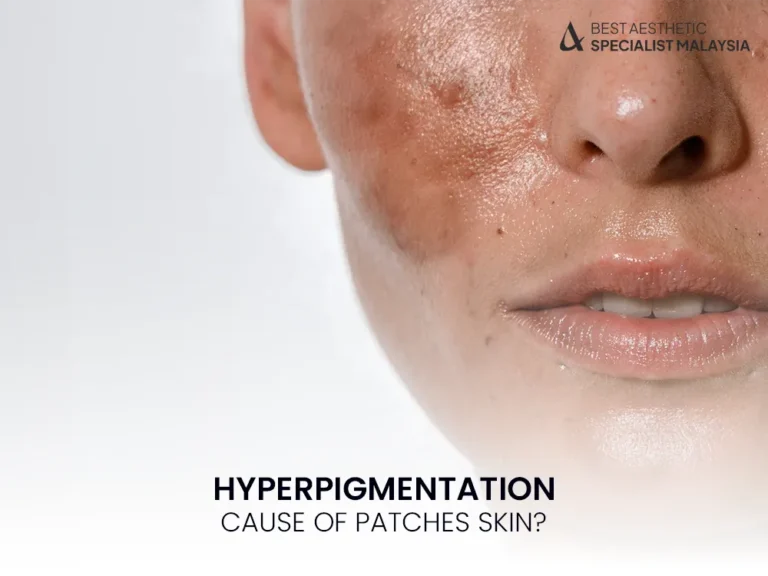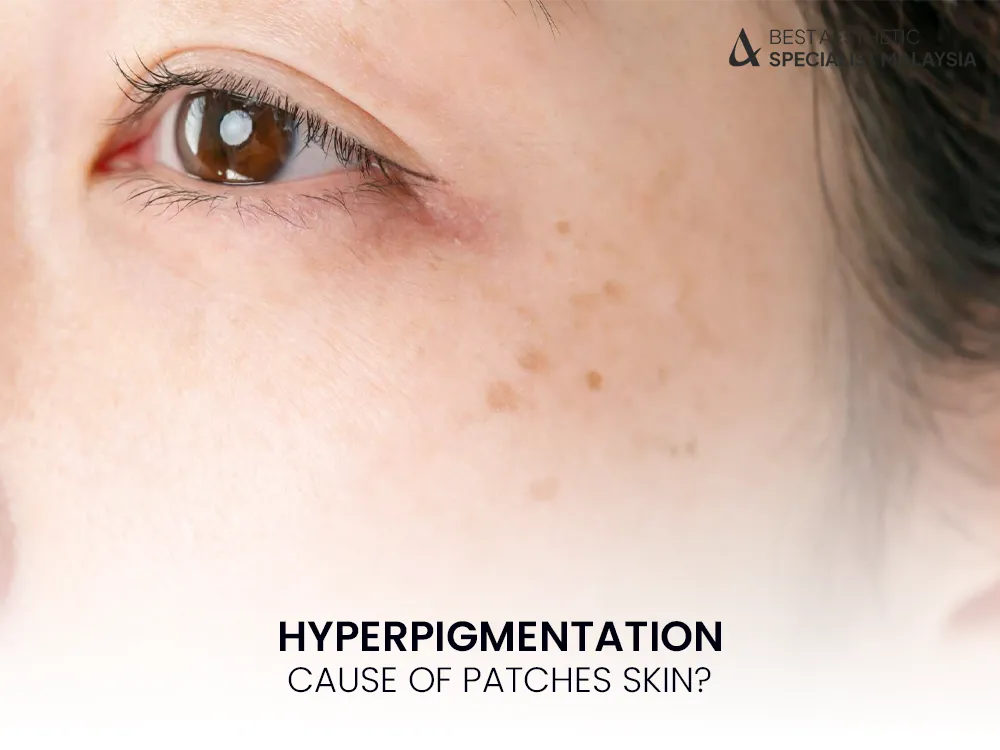Hyperpigmentation
Hyperpigmentation is a common skin condition that results in patches of skin becoming darker than the surrounding areas. This darkening occurs due to an overproduction of melanin, the pigment responsible for skin color. While hyperpigmentation itself is not harmful, it can be a source of cosmetic concern for many individuals. In this article, we will delve into the causes, types, and treatment options for hyperpigmentation, address whether it leads to patches of skin, and answer some frequently asked questions to provide a comprehensive understanding of the condition.
Skin Hyperpigmentation
Hyperpigmentation is a condition that can affect people of all skin types, though it may be more pronounced in individuals with darker skin tones due to higher levels of melanin. The condition typically manifests as darker spots or patches that may vary in size and shape. Common causes of hyperpigmentation include:
Sun Exposure: Prolonged exposure to the sun’s ultraviolet (UV) rays can stimulate melanin production, leading to sunspots or age spots.
Inflammation: Post-inflammatory hyperpigmentation (PIH) occurs when the skin darkens after an injury, acne breakout, or other inflammatory conditions.
Hormonal Changes: Hormonal fluctuations, particularly during pregnancy or while taking birth control pills, can trigger melasma, a type of hyperpigmentation.
Medical Conditions: Certain health conditions, such as Addison’s disease or hemochromatosis, can contribute to skin darkening.
Medications: Some medications, including certain antibiotics, chemotherapy drugs, and anti-seizure medications, can cause hyperpigmentation as a side effect.
Does Hyperpigmentation Cause Patches of Skin?
Yes, hyperpigmentation often causes patches of skin that are darker than the surrounding areas. These patches can appear anywhere on the body but are most commonly found on areas exposed to the sun, such as the face, hands, shoulders, and arms. The size, shape, and intensity of these patches vary depending on the underlying cause of hyperpigmentation.
Types of Hyperpigmentation Leading to Patches:
Melasma: This type of hyperpigmentation appears as larger, symmetrical patches, often on the cheeks, forehead, and upper lip. It is closely linked to hormonal changes and sun exposure.
Sunspots: Also known as solar lentigines, these are small, dark patches that develop over time due to repeated sun exposure.
PIH: Post-inflammatory hyperpigmentation results in flat, darkened spots or patches that develop after skin trauma or inflammation.
Freckles: Although technically not a type of hyperpigmentation, freckles are clusters of pigmented cells that become more visible with sun exposure.
Treatment Options for Hyperpigmentation
While hyperpigmentation is generally harmless, many people seek treatment to achieve a more even skin tone. Treatment options vary based on the severity and type of hyperpigmentation:
Topical Treatments:
Hydroquinone: A skin-lightening agent that reduces melanin production.
Retinoids: Help accelerate cell turnover to fade dark patches.
Vitamin C: An antioxidant that brightens the skin and inhibits melanin production.
Kojic Acid: Derived from fungi, this compound can help lighten skin discoloration.
Chemical Peels: These involve applying a chemical solution to exfoliate the top layer of skin, promoting new, evenly pigmented skin growth.
Laser Therapy: Laser treatments, such as fractional laser or intense pulsed light (IPL) therapy, target and break down melanin deposits.
Microdermabrasion: This minimally invasive procedure exfoliates the skin to reduce the appearance of dark patches.
Sun Protection: Daily use of a broad-spectrum sunscreen with SPF 30 or higher is crucial to prevent worsening of hyperpigmentation and to protect treated areas from recurrence.
Preventing Hyperpigmentation
While not all cases of hyperpigmentation can be prevented, taking proactive measures can reduce your risk:
Use sunscreen daily, regardless of the weather or season.
Avoid excessive sun exposure, especially during peak hours.
Wear protective clothing, such as wide-brimmed hats and UV-blocking sunglasses.
Treat inflammatory skin conditions promptly to minimize the risk of PIH.
Be cautious with cosmetic procedures and use products suitable for your skin type.
FAQs About Hyperpigmentation
Is hyperpigmentation permanent?
In many cases, hyperpigmentation fades over time, especially with appropriate treatment. However, some forms, like melasma, may require ongoing management.
Can hyperpigmentation be treated at home?
Yes, mild cases of hyperpigmentation can often be treated with over-the-counter topical products containing ingredients like vitamin C, niacinamide, and alpha hydroxy acids (AHAs). However, persistent or severe cases may require professional intervention.
Does diet affect hyperpigmentation?
While diet alone is not a direct cause, consuming a balanced diet rich in antioxidants can support overall skin health. Foods like berries, leafy greens, and fatty fish can provide nutrients beneficial for the skin.
Is hyperpigmentation related to skin cancer?
Hyperpigmentation itself is not cancerous. However, it is essential to monitor any dark patches for changes in size, shape, or color, as these could indicate skin cancer. Consult a dermatologist if you notice suspicious changes.
Can men get hyperpigmentation?
Yes, hyperpigmentation affects both men and women. The causes and treatment options are similar for all genders.
Conclusion
Hyperpigmentation is a common and often harmless condition that leads to darker patches of skin. While these patches can result from various factors, including sun exposure, hormonal changes, and inflammation, effective treatments and preventative measures are available. By understanding the condition and taking steps to protect your skin, you can manage hyperpigmentation and maintain a healthy, radiant complexion. If you have persistent or severe hyperpigmentation, consulting a dermatologist can help tailor a treatment plan to your needs.




